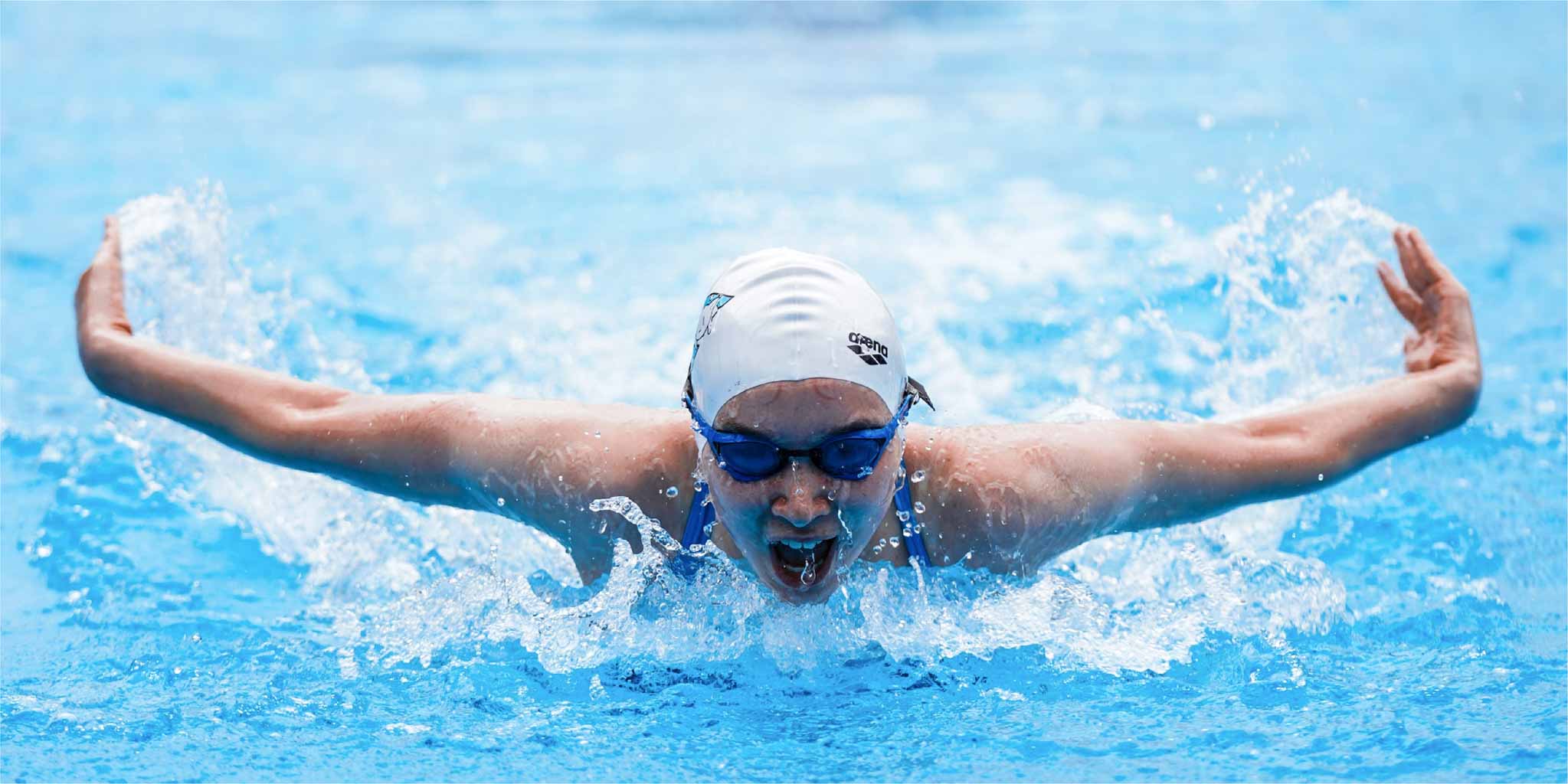Butterfly Swimming Drills

The preceding skills progression and the accompanying drills can be used by all butterfly swimmers, regardless of experience, to review fundamentals like body position, stroke timing, rhythm, flow, and kicking.
Only one arm.
Hold one arm at your side while swimming the butterfly with the other, breathing to the side of the stroking arm. This is a fantastic drill for reinforcing the stroke rhythm and timing of the two kicks. Roll slightly to the side as you recover your arm and picture generating the most widest arc possible with your arm. This allows you to keep your arm straight during the recuperation process. This fantastic drill is handy for linking the underwater phase of the stroke to the recovery phase. Accelerate through the finishing press and into the recovery without pausing.
Single, Double, Single
This widespread practice for improving rhythm and timing starts with a streamlined kick from the wall.
Swimming one arm stroke cycle using only your left arm, followed by another process stroking with your right arm with the left arm extended, and lastly, swimming a stroke cycle utilizing both arms. You can repeat this pattern or change it to two right-arm, left-arm, and full-stroke processes. You can increase this series to a set of threes or higher as you go.
Underwater dolphin kick
This kicking workout can be done with your hands at your sides or your arms overhead in a streamlined position. As you snap your feet at the end of the water stroke, activate your abdominal and lower-back muscles to transfer energy flow to your hips and legs. Successful underwater dolphin kickers move their torso and arms very little up and down.
Dolphin kicks to your back.
During this fantastic abdominal strengthening activity, lie on your back with your hands at your sides and keep your head out of the water. Concentrate on kicking up and snapping your feet beneath the water’s surface. Make a small splash if possible. Scull gently at your sides with your hands.
Vertical dolphin kick
Maintain an upright position with your arms crossed over your chest while performing this drill in the pool’s deep end. Use fins if your kick isn’t strong enough to keep your head above water. Concentrate on kicking in both directions and producing energy and force from your core muscles. Sprint for 10 to 15 seconds and then rest, gradually increasing to sprints of 30 seconds. When you’re ready for a more significant challenge, kick with your arms above your head in a streamlined position.
Building The Butterfly Swimming Stroke
The butterfly stroke can be mastered with the correct combination of abilities, patience, and practice. The progression below is appropriate for novice and advanced butterfly swimmers and valuable for teaching and perfecting the stroke.
1. Pulse and kick with your arms out in front. Work from your core while keeping your head aligned with your neck and spine. Every fourth kick, take a deep breath.
2. Scull your hands in and out as you pulse and kick. Spread your arms to scull, or sweep, your hands out to the catch position as your chest goes down and your hips rise. Sweep your hands back in as you lift your chest and lower your hips. Maintain proper head alignment while you concentrate on the catch, your hips, and the finish of each kick. If you complete this drill correctly, you will feel like a band director, with your elbows raised and your hands sweeping in and out. Using a snorkel may assist you in focusing on your body position and head alignment.
3. One stroke cycle with four kicks. This step is similar to the first. However, the third kick is different. When your chest is placed against the water, commence your catch and complete an entire stroke cycle. Continue to move your hands quickly during the submerged phase and into the recovery phase. Perform your fourth kick as your hands push back and leave the water. Concentrate on the placement of the two kicks in each cycle, the first as your hands enter and the second as they exit the water. “Kick your hands into the water and kick your hands out,” coaches advise.
4. One stroke cycle with two kicks. Reduce the number of kicks at the front of your stroke after you’re comfortable with step 3, but keep a visible pause at the start of each cycle while your arms are extended right before the catch. When grabbing your breath, keep your chin on the water’s surface and your eyes on the water to keep your head and body aligned. Refrain from lowering your head or tucking your chin.
You can complete a full-stroke butterfly once you’ve mastered these four steps. Maintain stroke rhythm by focusing a long ride on each stroke’s forward motion. Resist the urge to hurry towards the following stroke’s catch. Begin incorporating butterfly swimming strokes into your workouts by swimming two to four butterfly strokes from the wall, followed by easy freestyle for the rest of the length. Choose a breathing pattern that is comfortable for you and complements the flow of your stroke. You will soon be able to swim butterfly for the entire pool length with persistent practice.


